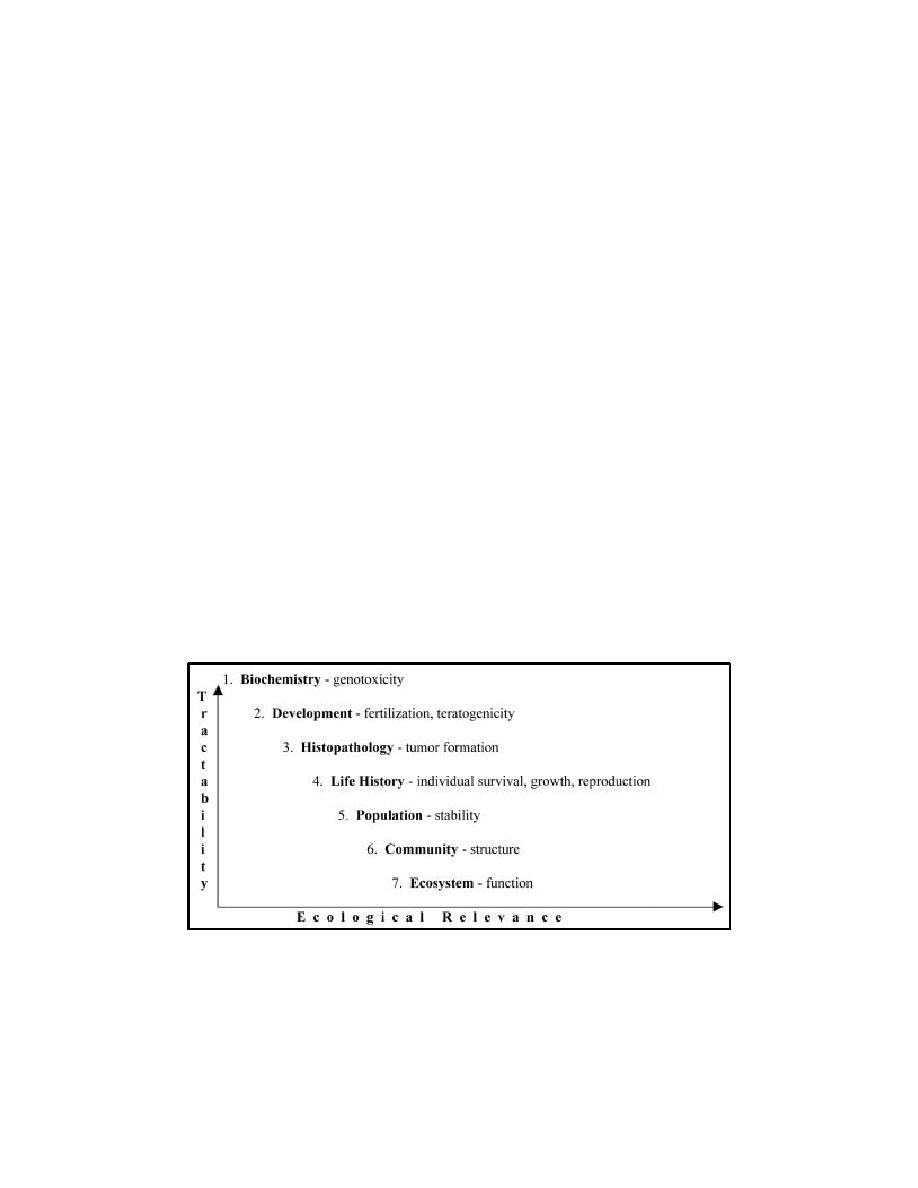 |
||
|
|
||
|
Page Title:
Figure 2-3. Lower levels of biological organization are more tractable for testing than higher levels, but are less ecologica... |
||
| |||||||||||||||
|
|
 protect abiotic ROC is quite straightforward. If a standard is not met, it is assumed
that the abiotic ROC the standard is intended to protect is at risk unless it can be
clearly demonstrated otherwise. In this case, some type of management action may
be appropriate.
The case of biotic ROC is much more complex. The state of the art of
predictive biological testing and evaluation is such that standard laboratory tests
address changes at the organism or suborganism level, while effects on ROC
occur in the field at higher levels of biological organization. Predictive tests are
usually conducted under laboratory conditions, or occasionally under "controlled"
field conditions. Thus, interpretation of results in terms of an effect on a biotic
ROC requires extrapolation from laboratory to field conditions, as well as
extrapolation from lower to higher levels of biological organization and perhaps
from surrogate species to the ROC. Figure 2-3 is a conceptual illustration of the
hierarchy of biological organization in relation to ecological relevance and
tractability of testing. The most tractable tests address responses at the cellular,
organ, and individual levels (i.e., levels 1 through 4) of biological organization.
Population, community, and ecosystem levels of biological organization (levels 5
through 7) are much more difficult to test and evaluate predictively but are the
levels at which the potential for effects should be evaluated. Most of the
biological evaluations in the UTM are at the life history level of organization
(level 4), measuring effects on survival, growth, and reproduction of individual
organisms under laboratory conditions. Some tests may be conducted at lower
levels of biological organization, and there is ongoing scientific attention to
prediction of population-level responses from individual life history data. At
present, however, evaluation of the potential for effects should be based on results
of laboratory tests at the level of individual organisms extrapolated to populations,
communities, and ecosystems in the field.
Figure 2-3. Lower levels of biological organization are more tractable for testing
than higher levels, but are less ecologically relevant
Whether risks to individual organisms imply that management actions are
needed to protect ROC at the population, community, or ecosystem level depends
on many factors, all of which should be considered, because none are singularly
2-11
Chapter 2 Structure and Approach of the UTM
|
|
Privacy Statement - Press Release - Copyright Information. - Contact Us - Support Integrated Publishing |